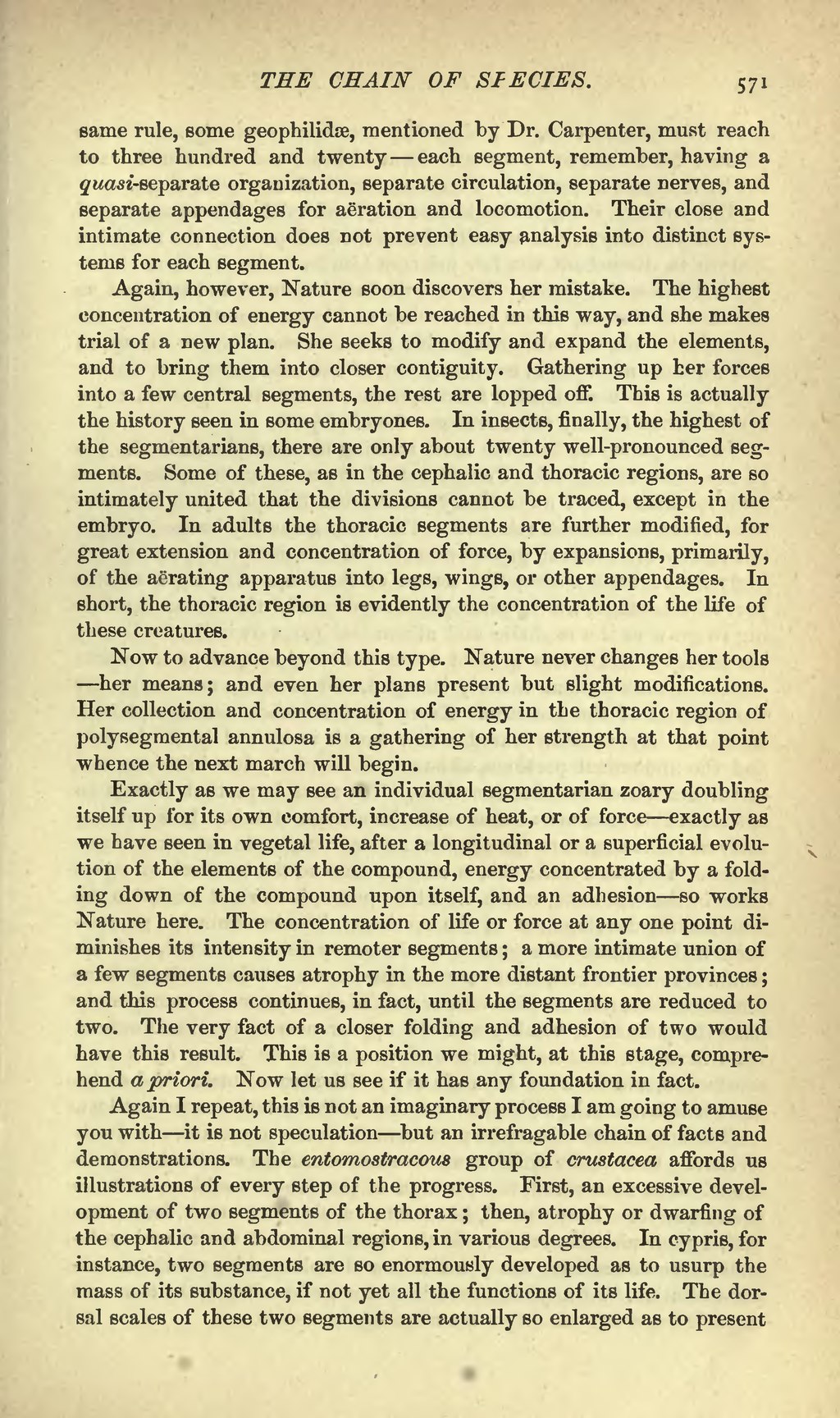same rule, some geophilidæ, mentioned by Dr. Carpenter, must reach to three hundred and twenty—each segment, remember, having a quasi-separate organization, separate circulation, separate nerves, and separate appendages for aëration and locomotion. Their close and intimate connection does not prevent easy analysis into distinct systems for each segment.
Again, however, Nature soon discovers her mistake. The highest concentration of energy cannot be reached in this way, and she makes trial of a new plan. She seeks to modify and expand the elements, and to bring them into closer contiguity. Gathering up her forces into a few central segments, the rest are lopped off. This is actually the history seen in some embryones. In insects, finally, the highest of the segmentarians, there are only about twenty well-pronounced segments. Some of these, as in the cephalic and thoracic regions, are so intimately united that the divisions cannot be traced, except in the embryo. In adults the thoracic segments are further modified, for great extension and concentration of force, by expansions, primarily, of the aërating apparatus into legs, wings, or other appendages. In short, the thoracic region is evidently the concentration of the life of these creatures.
Now to advance beyond this type. Nature never changes her tools—her means; and even her plans present but slight modifications. Her collection and concentration of energy in the thoracic region of polysegmental annulosa is a gathering of her strength at that point whence the next march will begin.
Exactly as we may see an individual segmentarian zoary doubling itself up for its own comfort, increase of heat, or of force—exactly as we have seen in vegetal life, after a longitudinal or a superficial evolution of the elements of the compound, energy concentrated by a folding down of the compound upon itself, and an adhesion—so works Nature here. The concentration of life or force at any one point diminishes its intensity in remoter segments; a more intimate union of a few segments causes atrophy in the more distant frontier provinces; and this process continues, in fact, until the segments are reduced to two. The very fact of a closer folding and adhesion of two would have this result. This is a position we might, at this stage, comprehend a priori. Now let us see if it has any foundation in fact.
Again I repeat, this is not an imaginary process I am going to amuse you with—it is not speculation—but an irrefragable chain of facts and demonstrations. The entomostracous group of crustacea affords us illustrations of every step of the progress. First, an excessive development of two segments of the thorax; then, atrophy or dwarfing of the cephalic and abdominal regions, in various degrees. In cypris, for instance, two segments are so enormously developed as to usurp the mass of its substance, if not yet all the functions of its life. The dorsal scales of these two segments are actually so enlarged as to present
